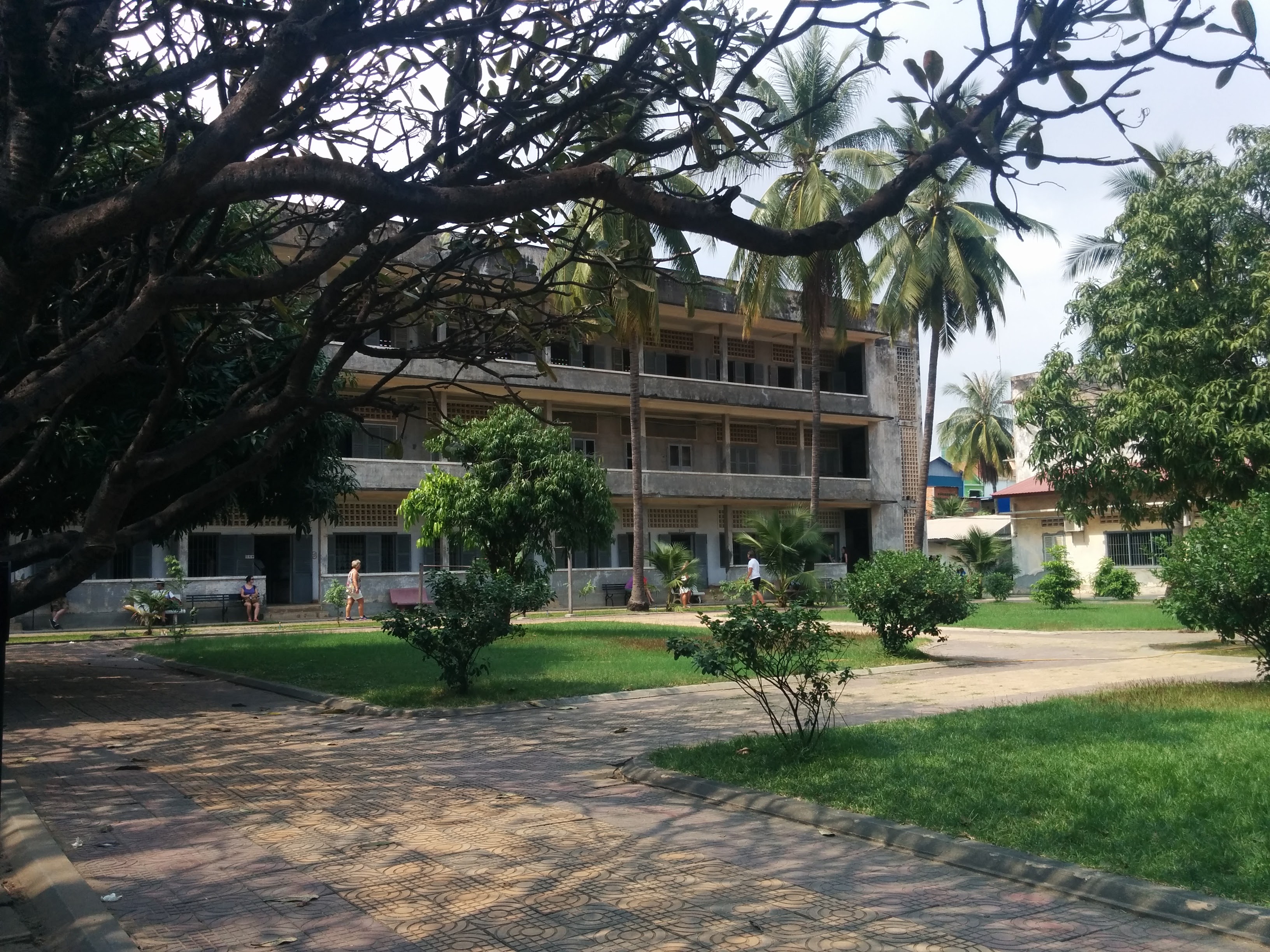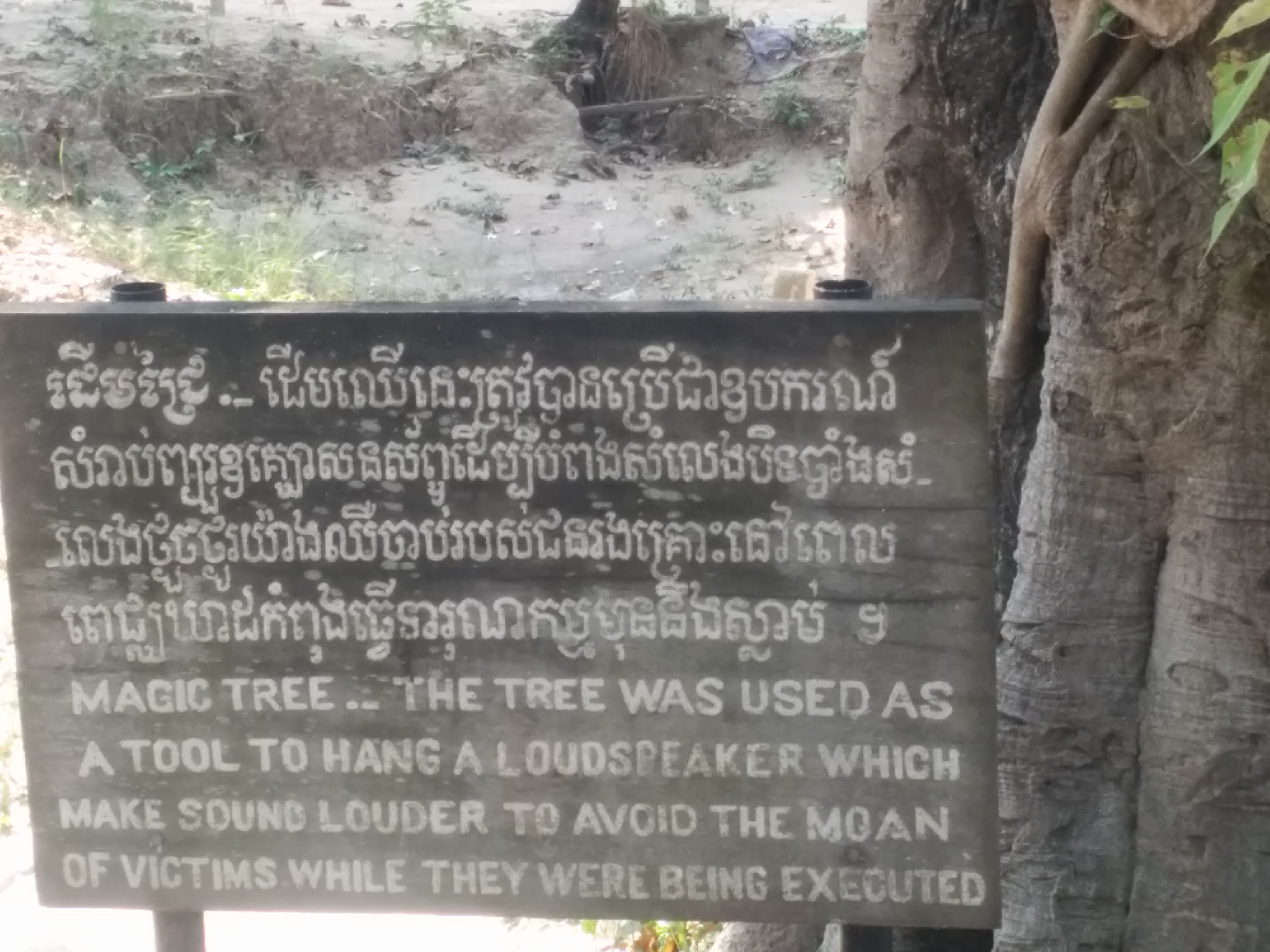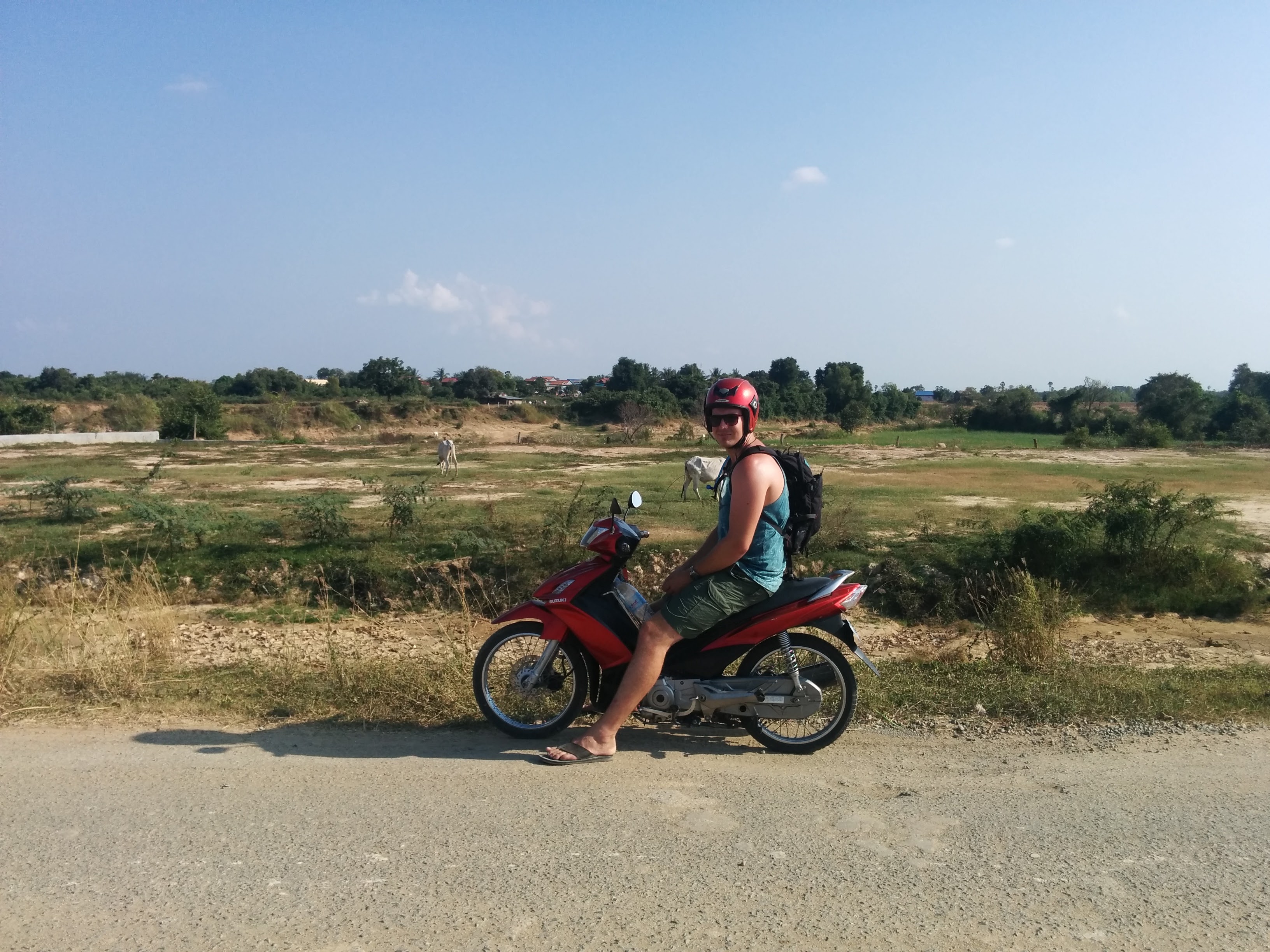Cambodia: Phnom Penh
Following my travels to Siem Reap, the next logical destination was to head south-east to the capital and largest city of Cambodia, Phnom Penh. As we were on a slight time constraint we took a direct overnight bus, which landed us there at just after 7am. As is often the case with taking public transport, local tuk-tuk drivers know the schedules and are conveniently waiting less than one meter from the door of the bus, ready to solicit your business and take you to your next port of call.

Once we settled ourselves in to a pretty classy yet cheap hostel (Eighty-Eight, located on the street of the same name, I would recommend it) we sorted ourselves some motorbikes and I embarked on what I would soon find to be one of the most challenging tasks of my trip so far – finding jandals that fit my gargantuan western feet.
You see, I knew that finding shoes and clothes in South East Asia would be a challenge, but not damn near impossible. My jandals (flip flops, sandals, thongs) had broken and were rendered useless. I’ll be buggered if I was going to spend the next few weeks without a set; they are essential to the tropical travel life. We took off on the motorbikes (me with bare feet, way too hot for shoes), found some markets and I was soon being assured by practically everyone I asked that they simply didn’t make them in my size (13/14, or around a 47-48). This left me with on option: to get some custom made.
A quick google search revealed reports from other backpackers about a street with several shops offering custom made footwear, which coincidentally turned out to be on the same road as the Genocide Museum. We made our way there (through traffic which I would rate as a 6/10 on the madness scale), stopped only by a crooked cop who demanded $10 USD from Phil for not carrying a license that wouldn’t be valid anyway. When we got to the street, I found a fellow who measured up my feet and was going to provide me with custom jandals by the next day for around $25. I can deal with that.
This is the main manufacturing facility of the shop. You can see one of the jandals on the table.

One of the moulds they use to make shoes.

I returned the next day to collect my jandals. Here’s how the conversation went:
“You OK?”
“Um. They seem a little small.” (I was dragging ankle).
“Ahh.”
“Yea. You did measure my foot, though.”
“Oooooh. Mmmm. Yes, this the biggest size.”
It turns out that you can’t even get custom made jandals in a size 14 in Cambodia. Let me impart a word of advice on you if you’re heading to this part of the world and are similarly built – bring a spare pair of jandals. There isn’t a problem with finding some in Thailand, as there is a heavier focus on tourist products. But you’re pretty much up shit creek without a paddle in Cambodia (and Vietnam) if you need large shoes.
Anyway, shoe debacle aside (I ended up buying them for the meantime anyway as I needed some and they were slightly bigger than the jandals in the market) the next stop was to visit the Genocide Museum and the Killing fields, which would provide some first person clarification.
P.S. The next bit is rather morbid.

I’m aware that there will be quite a few people reading this who aren’t overly familiar with what Cambodia’s been through in the last few decades. The Khmer Rouge regime wasn’t nearly as publicised as it should have been, mostly for the fact that the UN still recognised the KR as Cambodia’s official ruling party until well into the 90’s.
To summarise it without taking too much time, the Khmer Rouge ruled Cambodia under the leadership of Pol Pot from 1975-1979, 30 years after WWII ended. There’s obviously a lot more to it but they basically began forcing their way through the country in the late 60’s and by the mid 70’s had practically overthrown the government. Over the next few years, mass genocide was carried out in the ‘name’ of social reform, with their goal being to ‘cleanse’ the country and create an agricultural reform. During the course of the regime, over 2 million Cambodians were murdered, with the exact number far from decided on.
The genocide museum was actually originally a school, before it was turned into a prison used to house prisoners. You can walk through it all for $6USD, which includes a personal handset with a guided audio tour (I highly recommend getting the audio tour for the extra $3). Here are a few pictures from the prison.
You can see where they barricaded the vents above the old classrooms on the lower floor to keep down the noise from the torture going on.


Interrogation room. One of many.



In these interrogation rooms, there wasn’t any choice but to tell them what they wanted to hear. People were tortured until they made up stories about being spies and planning to overthrow the regime so that it would all stop.



Cells which were built to house prisoners.

Water boarder, used to simulate drowning.


One of the things I learned while taking the tour is that many of the people imprisoned by the regime were the intelligent people in society. Anyone that was thought to possess a degree of intelligence was imprisoned and accused of being a foreign spy, working for the KGB or CIA. I heard an excerpt from the father of a New Zealander who was captured as he docked his boat for the night, where he explains that his son told his captors that he was working with Colonel Sanders from KFC so that they’d stop probing him for answers.
On the way out I met a man who was confined here and managed to survive. He was selling books of his story. One thing I wasn’t too impressed by was when we walked in it was stressed that this is a place of respect, and to keep your voice down. However, in the corner, next to the fourth building there was a stall selling T shirts and other market crap to capitialise on the presence of tourists. I didn’t think that was too flash.
After visiting the museum we took a cruise by the river on the way back and I came across a chap selling the freedom of birds. He was catching the birds, charging people to let them go, then catching the same birds and putting them back in the cage. This is supposed to bring good luck. Right.

A Cambodian highway in a typical state of repair. Note the fellow with the white helmet driving on the wrong side of the road: that’s normal behaviour. Road rules don’t really mean much in Cambodia.


This bloke caught me snapping a picture of his T shirt. He asked me to explain what it meant as he actually didn’t know. After using sign language to convey the meaning, he laughed and said he didn’t believe me. Oh well. Hope it helps him out.

I also visited the killing fields, which is where prisoners were taken for mass execution after they had confessed to things they were forced to make up. There are many killing fields all over Cambodia but this is one of the more famous ones. I won’t go in to details, the photos pretty much speak for themselves.







The most messed up thing about it all is that following the regime, the Khmer Rouge still got financial support from the UN to attend meetings and Pol Pot lived a relatively normal life until he died in 1998. After seeing all of this it’s easier to understand why the country is obviously in a state of rebuild and some aspects of the infrastructure are flailing behind it’s other SEA counterparts. The regime, as well as killing a lot of innocent people from all walks of life eliminated a lot of the thinkers from society, which is never going to assist in helping that generation or the one following it to develop.
After visiting the fields we took a tiki-tour via the back roads on the way back.

This was one massive bull. It’s cool to go via the back roads and see locals that aren’t used to seeing tourists, ones that live off the beaten path. They’re generally pretty stoked on meeting foreigners.

Here you can see Angus. Angus isn’t very good at football. I’d say he would also have trouble finding shoes that fit.

On the highways, I saw quite a few people with small stalls right next to their very poorly constructed shack (where they lived). I pulled over to see what they were making a living selling. Bugs.

After we finished up in Phnom Penh, we headed south west to the party town of Sihanoukville via bus. Here, you can see a classic Cambodian roadblock.

Like I said, animals roam freely and they don’t really care about what’s trying to get past.
Thanks for reading! In my next update I’ll cover off my time in Sihanoukville and Koh Rong, and the trip east over the border into Vietnam.
Damo
